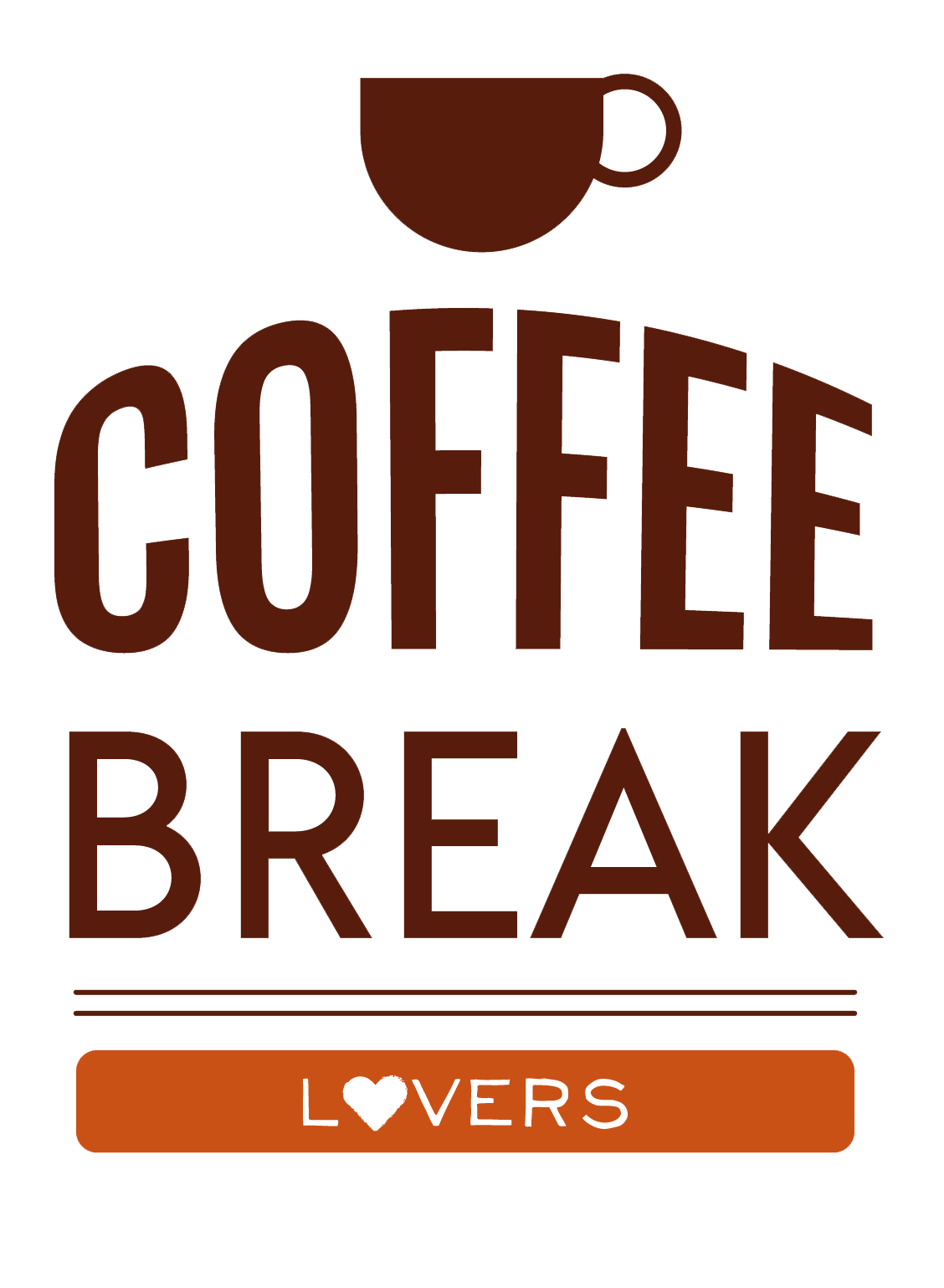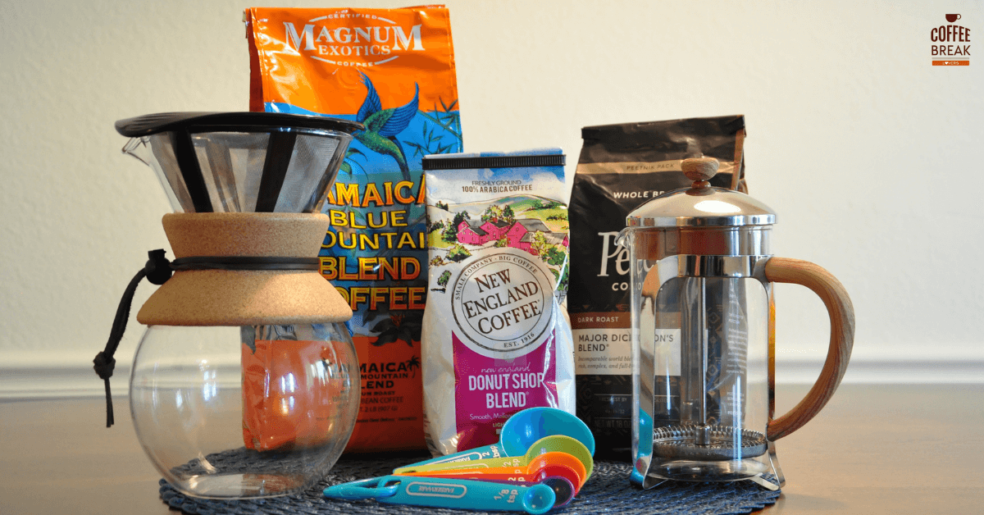A lot of coffee drinkers love their morning brew but not everyone knows the right amount of coffee grounds to use. Too little could leave your coffee watery, and too much will make it bitter. So just how many tbsp of coffee per cup should you use to get the best flavor?
As a general rule, 2 tablespoons of ground coffee should be used for every 6 ounces of water. This ratio is commonly referred to as the “Golden Ratio” and it optimizes the amount of coffee solubles that are extracted per ounce of water. However, it can be modified to fit personal tastes.
Now, you may be wondering if the best ratio for a dark roast is the same as for a light roast. Or if the brewing method affects the ratio.
We wondered about this as well, so we ran a few experiments to find out.
Read on to see what we learned!
How Many TBSP Of Coffee Per Cup Should I Use?
In general, coffee tastes best if you use 2 tablespoons of ground coffee for every 6 ounces of water.
Technically, the “Golden Ratio” described by the National Coffee Association recommends using a range of between 1 and 2 tablespoons of ground coffee for every 6 ounces of water.
That’s a pretty wide range, but most coffee brands agree with it. However, they don’t always agree on the exact amount to use.
For example, our bags of New England Coffee and Jamaican Blue Mountain Blend recommends using 1 tablespoon per 6 oz of water. While our bag of Peet’s Major Dickason’s Coffee recommends 2 tablespoons per cup of water.
(All three of these coffees are available on Amazon if you would like to check them up. New England, Jamaican Blend, and Peet’s Major Dickason’s Blend)
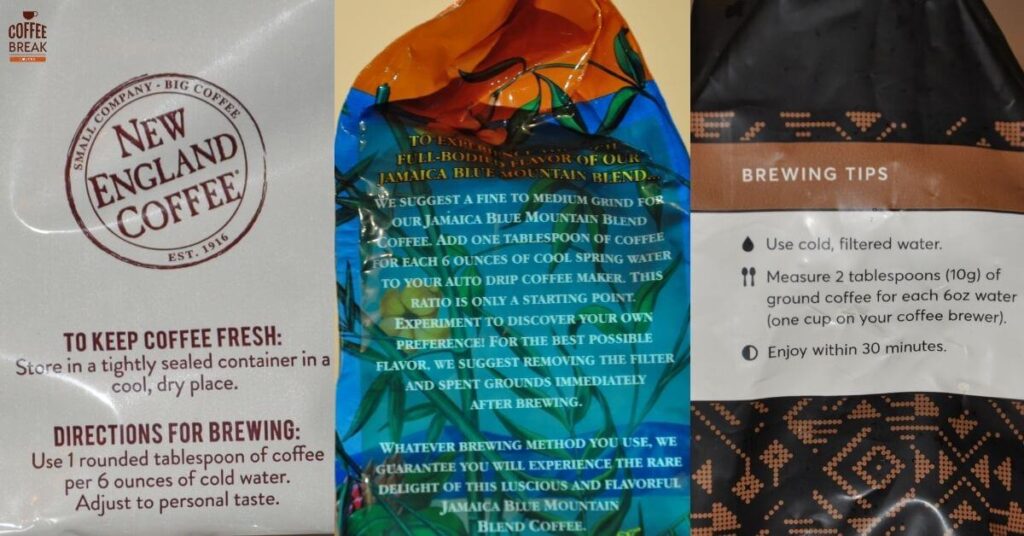
So which amount is best? Is it better to use 1 tbsp for some roasts and 2 tbsp for others? Or how would it taste if we used 3 tablespoons per cup?
How We Tested The Best Amount Of Ground Coffee To Use
To figure out how many tbsp per cup is best, we used our Bodum Pour Over Maker (which you can find on Amazon) to brew 3 types of coffee.
- A light roast (New England Coffee Donut Shop Blend),
- Medium roast (Jamaican Blue Mountain Blend) and
- Dark roast (Peet’s Major Dickason’s Blend)
We also brewed each roast 3 different times using:
- 1 tbsp of coffee,
- 2 tbsp of coffee and then
- 3 tbsp of coffee
We ground our coffee to a medium grind using our Mr. Coffee Electric Coffee Grinder (check it out on Amazon.) Except for our New England Coffee which was already ground.
You can see our results below.
Summary Of Brewing Results
For each type of coffee brewed, we found that 2 tablespoons of coffee provided the best body and flavor. While 1 tablespoon and 3 tablespoons were too weak and too strong, respectively.
| Coffee Type | 1 tbsp | 2 tbsp | 3 tbsp |
| Light Roast (New England Coffee) | weak | just right | strong |
| Medium Roast (Jamaican Blue Mountain Blend) | weak | just right | strong |
| Dark Roast (Peet’s Coffee) | weak | just right | strong |
Results Brewing Light Roast Coffee
The instructions on this package of light roast coffee recommended that we use 1 tablespoon for every 6 ounces of water.
However, the coffee came out very weak and watery because of low coffee extraction. It also didn’t look like the dark coffee we were used to and was fairly transparent.
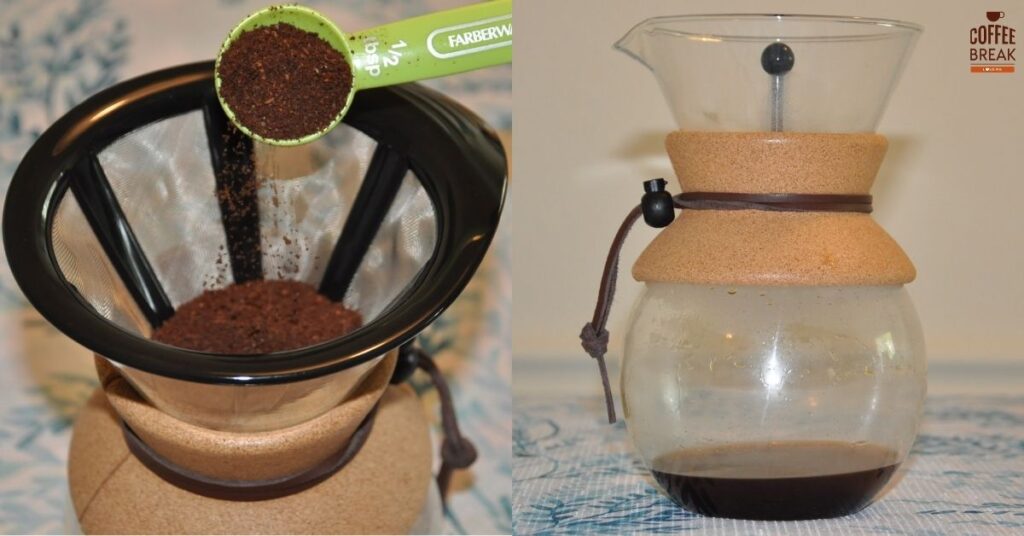
We tried brewing again with 2 tbsp and the coffee was dark and opaque. The coffee also had more aroma and a robust flavor. The coffee’s body was also heavier due to more coffee solubles being extracted.
With 3 tbsp, the coffee was just a bit darker and stronger. There also appeared to be more sediment at the bottom of the cup. But other than that, there wasn’t a massive difference between the 3 tbsp and 2 tbsp coffees.
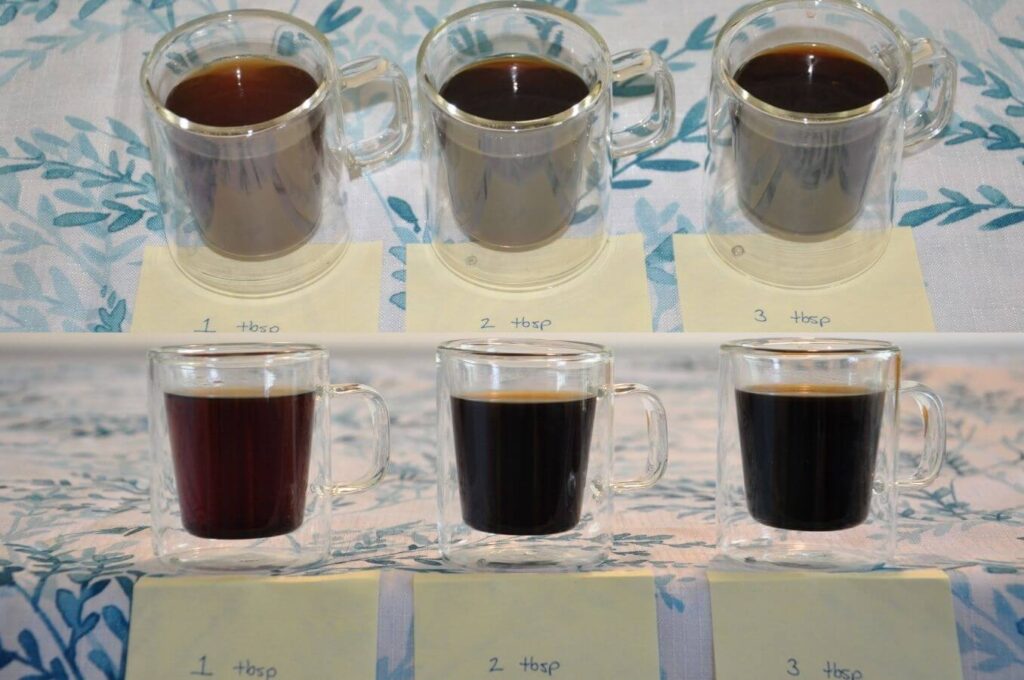
Results of Brewing Medium Roast Coffee
Our medium roast coffee also recommended using 1 tablespoon per 6 ounces of water, however, the results were weak coffee.
The coffee brewed with 1 tbsp was very light because not enough coffee solubles were extracted. It also had a very subtle flavor.

With 2 tablespoons of coffee, the coffee was much stronger and the flavor profile was noticeable. The appearance was darker and was overall much more like normal coffee.

The flavor with 3 tablespoons was a bit more intense than with 2 tbsp and the appearance was even darker. There was also a heavier mouthfeel and more sediment at the bottom of the cup.

Results of Brewing Dark Roast Coffee
Our bag of the dark roast (Peet’s Major Dickason’s Blend) was the only one to recommend using 2 tablespoons for 6 ounces of water.
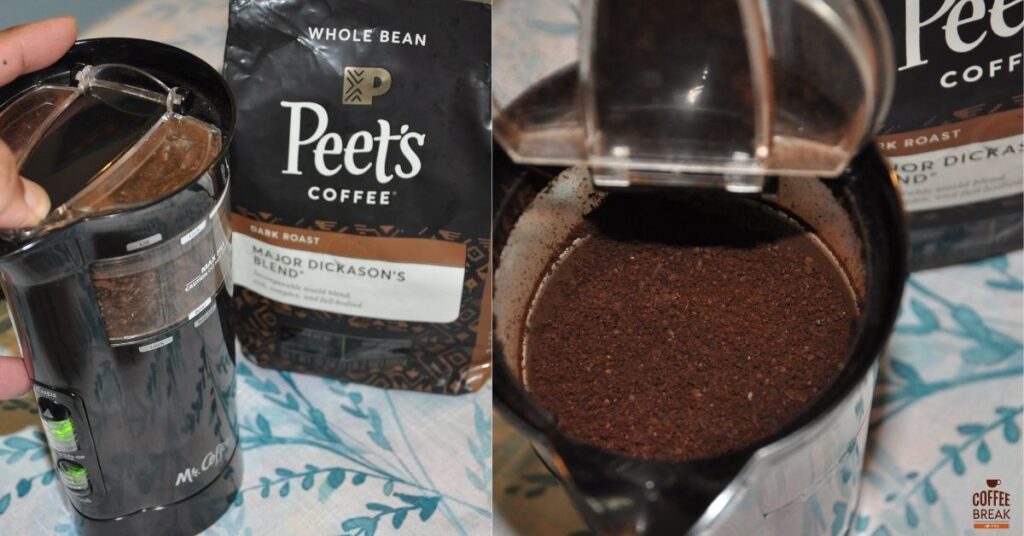
As with the light and medium roast coffees, 1 tablespoon was light, transparent, and subtle.
Two tablespoons of grounds provided the best flavor and mouthfeel. And 3 tablespoons was again, stronger, darker, and a touch more bitter.

Should I Measure Coffee With Tablespoons Or With A Scale?
In general, the best method of measuring your coffee grounds is with a kitchen scale. Ground coffee can vary in density, so measuring it by volume isn’t as consistent or precise as measuring it by weight.
However, it’s not always convenient to use a scale and there are benefits to both methods.
Benefits of Measuring Coffee Grounds With Tablespoons
The main benefits of measuring coffee grounds with tablespoons are ease and convenience.
Not everyone has a kitchen scale. And even if you do, you don’t always have time to measure out the exact amount of coffee you need.
Also, sometimes you may not want an absolutely perfect cup of coffee. Maybe you just want a quick and decent cup of joe.
If that’s the case, using tablespoons is a great option.
Benefits of Measuring Coffee By Weight
Brewing the best cup of coffee is all about precision. Precisely measuring your coffee grounds, your water temperature, and controlling other variables like water flow.
And that type of precision only comes when you measure by weight instead of volume.
Keep in mind that
- a scoop of densely packed coffee will contain more grounds than a scoop of “airy” coffee
- a scoop of fine grounds will contain more coffee than a scoop of coarse grounds
This may not be a big deal for the average coffee drinker, but if you want every cup of coffee to be as consistent as possible, weighing your coffee will eliminate these variables.
Related Posts:
- Can You Use A French Press On The Stovetop? Yes, Here Are The Options!
- When To Take Moka Pot Off of Heat? Get The Perfect Brew!
- Grinding Coffee The Night Before. (Will It Ruin Your Brew?)
- Can A Moka Pot Explode? Top Security Tips Before Brewing!
How Many Grams Of Coffee In A Tablespoon?
One tablespoon is about 10 grams.
However, tablespoon sizes vary by country, so the answer could change depending on where you are or where your tablespoon originated.
This is useful to know because coffee ratios are sometimes given in tablespoons and sometimes in grams.
Likewise, the water measurements can be in milliliters or ounces (1 oz equals about 30 mL), so knowing how to convert between the two can save you some frustration.
Should I Change The Ratio For Different Brewing Methods?
With pour-overs and automatic drip makers, it’s best to use 2 tablespoons for every 6 ounces of water. But is it best to use this ratio for other brewing methods as well?
In general, if you keep the 2 tbsp for 6 oz ratio for other brewing methods, you should get a good cup of coffee. However, there are some cases where you’ll need to adjust.
Let’s take a quick look at a few of them.
Best Coffee To Water Ratio For French Press
The best coffee-to-water ratio for the French Press is the same as with the pour-over; 2 tablespoons for every 6 ounces of water.
To test this, we brewed medium-roast coffee using
- 1 tablespoon of coffee
- 2 tablespoons of coffee and then
- 3 tablespoons of coffee
Our results with this method were the same as with the pour-over.
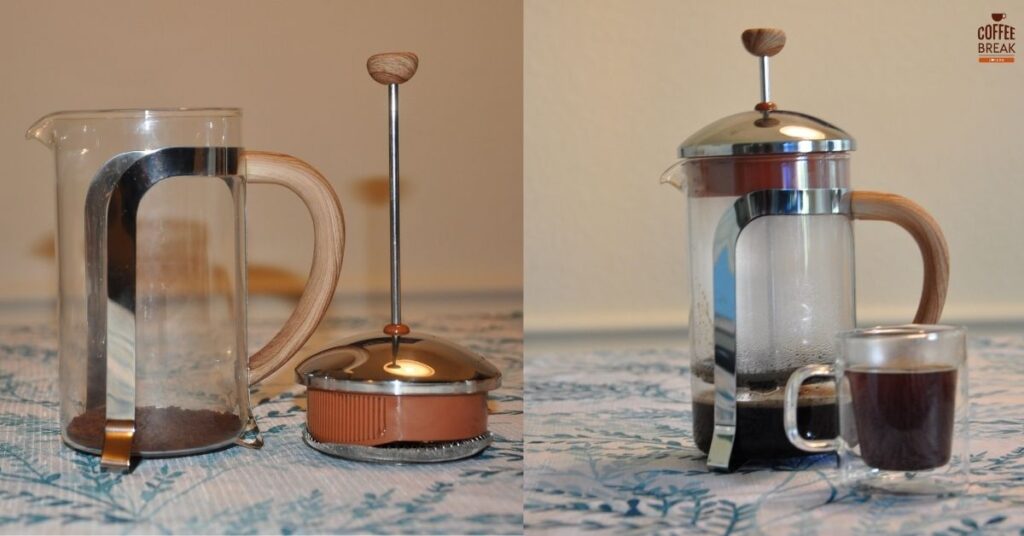
- One tablespoon made weak coffee that was more like water than coffee.
- Two tablespoons were perfect and created a dark coffee with a strong flavor and heavy mouthfeel.
- Three tablespoons brewed the coffee even darker and stronger. But it wasn’t too much different from the 2 tbsp cup.
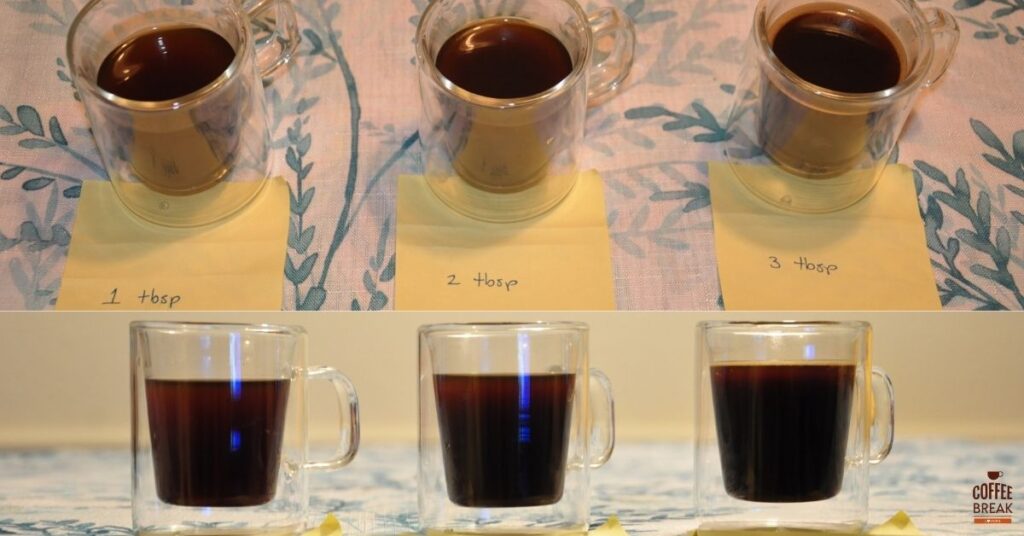
In the end, we’d recommend using 2 tablespoons for 6 ounces of water with the french press.
Best Coffee To Water Ratio For AeroPress
Typically, it’s recommended to use between 1 and 1.5 tablespoons of coffee for about 6 ounces of water with your AeroPress.
This ratio is slightly less than the pour-over or French Press methods, however, there are many AeroPress recipes that call for as much as 4 tablespoons of ground coffee.
If you’ve got an AeroPress, we recommend starting out with 1.5 tbsp for 6 ounces of water and then adjusting the recipe to your preferences.
Best Coffee To Water Ratio For Moka Pots
Moka Pots are a bit different because you don’t really have to measure the water or the coffee.
The best thing to do with a Moka Pot is to pour water into the bottom chamber up to the pressure release valve.
Then fill the filter basket with coffee grounds.
Because there are Moka Pots of various sizes, the actual amount of water and coffee you’ll end up using will depend on your brewer.
Best Coffee To Water Ratio For Cold Brew
This is where the coffee-to-water ratio changes significantly because we’re now brewing coffee with cold water, not hot water.
This means you need to add much more coffee to extract enough flavor.
The cold brew coffee-to-water ratio can vary from
- 1:4 ( 1 cup of ground coffee for every 4 cups of water) to
- 1:8 (1 cup of ground coffee for every 8 cups of water)
Of course, the perfect cold brew coffee-to-water ratio will depend on your taste preferences. But, the more coffee you use, the stronger your cold brew will be.
Key Takeaways – How Many Tablespoons Per Cup
- The best coffee-to-water ratio is 2 tablespoons of coffee for every 6 ounces of water
- This ratio remains the same whether you’re brewing light, medium, or dark roast coffee
- Measuring coffee with tablespoons is more convenient but weighing it is more precise
- One tablespoon equals about 10 grams of coffee
- While 2 tbsp per 6 oz of water is standard, you may need to adjust your ratio if you’re not using a pour-over, automatic drip maker, or french press.

KEEP READING
- Is Arabica Or Robusta Best For Cold Brew Coffee?
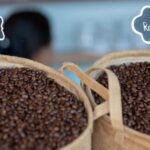
- Why Is My Espresso Puck Wet? (The 6 Most Common Reasons)
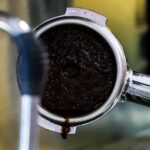
- How To Make Cuban Coffee Without A Moka Pot? (3 Options!)

- Does Cold Brew Break A Fast? Things To Consider!
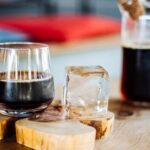
- Can I Use Coffee Grounds Twice? (Here Are Our Results!)
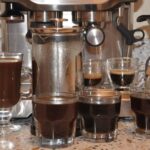
- What’s The Best Grind Size For A Moka Pot? Ultimate Guide!


Oliver is co-owner of Coffee Break Lovers. The only thing he loves more than the process of brewing coffee is drinking it.
